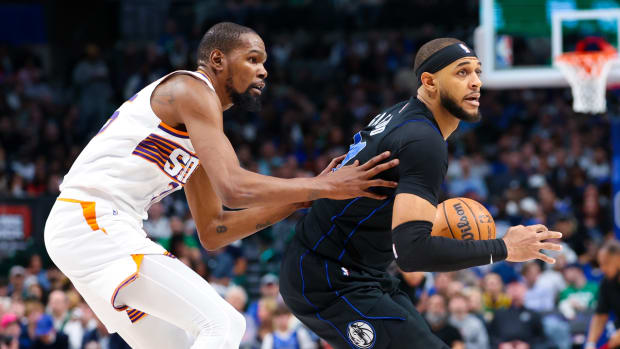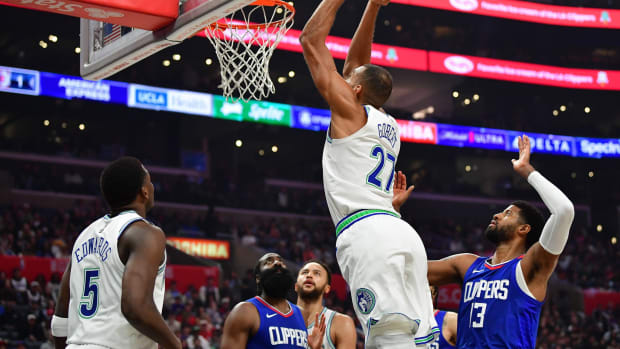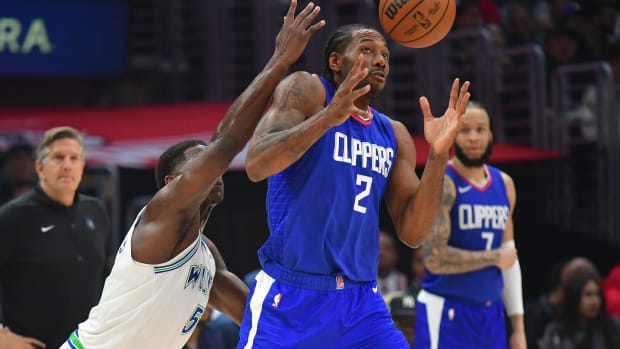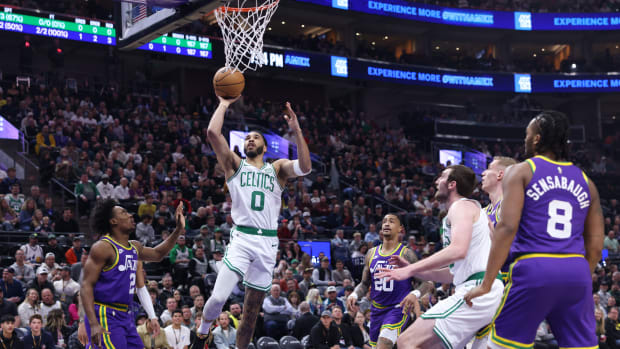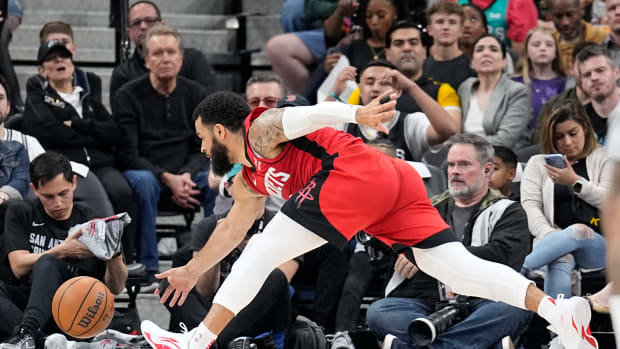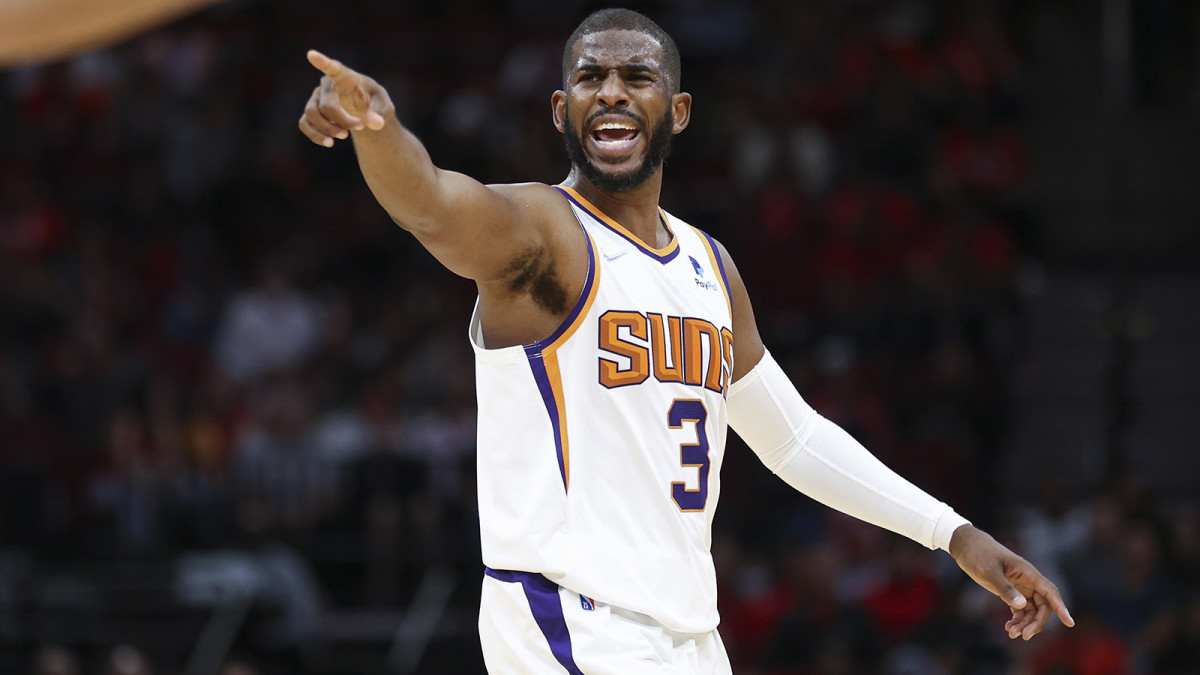
Chris Paul And the Suns Have Their Foot On the Gas
For the majority of his Hall of Fame career, methodical halfcourt offense has been catnip for Chris Paul. Strolling up the court, processing and precisely organizing the floor before him, Paul can think two or three moves ahead of everyone else.
The game tends to unfold at a snail's pace for Paul, whose teams would rather let him conduct with every instrument neatly arranged than in a frenzy. Phoenix, winners of 13 in a row, still pummels opponents with ubiquitous pick-and-rolls that oscillate into tight dribble handoffs involving some of the most dangerous shooters alive. But, so far, there’s one big difference: The Suns ranked 24th in pace last season (averaging 98 possessions per 48 minutes); right now they are fourth (at 101.6).
Some of that is thanks to a dip in the length of their defensive possessions (opponents are running at them more in transition), but only the Spurs, Warriors and Hornets are averaging fewer seconds per offensive possession than the Suns’ 14.3. Last season Phoenix ranked 18th in this category.
A few factors, including some adjustments made to the Suns’ system after last year’s loss in the Finals, make it clear this team wants to move quicker than it did—even if this enormous leap in pace wasn’t an explicit goal.
“We really simplified our attack,” Suns associate head coach Kevin Young told me on Tuesday. “We're not throwing it to the big in trail nearly as much, by a longshot, as we did last year. We're flowing a lot more into our pick-and-roll action. And that right there, in my opinion, has been the biggest thing we've done schematically … to be honest with you, an unintended consequence has really been the uptick in the pace.”
Familiarity throughout the roster also makes it easier to run, read and react a bit quicker than before. “Last year, it took us a little bit of time to figure each other out, in terms of Chris coming in and him and Book figuring out how to play off of each other,” Young said. “Certainly the familiarity of the guys with each other, and then within the system, kind of made for a perfect storm to get off to a decent start.”
The chemistry is easy to recognize whenever they push the ball. Watch Deandre Ayton hardly break stride coming off Devin Booker’s backscreen and forcing a switch that then lets Booker cut to the block for a jumper.
It’s not that Paul’s teams have never sought transition opportunities. But at 36 years old and coming off the deepest playoff run of his career, they’ve never gotten up and down quite like they’re doing right now. Paul’s own pace is currently 101.4, which is higher than ever before. He still walks the ball up the floor quite a bit, but he’s also throwing it ahead to leverage the young legs at his disposal, letting his teammates attack against a defense that isn’t yet set.
The Suns’ coaching staff began encouraging these kickahead passes in the playoffs, as a way to free Paul up from the full-court pressure he increasingly felt in each round. “I think it's had some carryover into this year,” Young said. “I think that's been able to free him up. He doesn't do it a ton, but he's able to get off the ball a little bit more. And if we don't score off that initial action he's able to be a beneficiary on the second side of things.”
The Suns dash up the court and create openings for each other. Watch how this full-on sprint by Mikal Bridges momentarily forces Jae’Sean Tate to yell back at Daniel Theis and make sure he’s covered, allowing Booker to spot up for a quality look.
And then here’s Booker returning the favor: As he veers into the paint it creates a split second of confusion between Reggie Bullock (who was back but not matched up with anyone) and Tim Hardaway Jr. Miscommunicate for a moment in the open floor and this is what happens.
The aggressiveness is noticeable with Paul in the game, but turns into a five-alarm fire when he’s on the bench. Last season the Suns’ pace was 98.9 with Paul and 100.1 without. Right now, when Paul sits, their pace is a team-high 105.9. (Cam Payne, who’s averaging more shots per 100 possessions than every Sun except Booker, has a green light that will burn your retina.)
Wrapped inside Phoenix’s rising velocity is a fascinating dynamic related to Booker, who for basically his entire career before last season played on teams that were fine participating in a track meet. When Paul came aboard, it was Booker who adjusted to unhurried conditions. The on/off splits with Booker and Paul do a good job illustrating this shift.
Last year the Suns were actually a tiny bit slower when Booker played without Paul than with: Their pace dipped all the way down to 99.3. Right now Phoenix’s pace when Booker is on the court without Paul is a whopping 105.6. It’s still early and Phoenix has plenty of time to revert back to the tempo they had so much success with a year ago. Defending them in the halfcourt is still a bear, but knowing you can be steamrolled in transition, too, is a mental tax opponents weren’t regularly paying last year.
Whether they keep this up for 82 games is a question worth asking given who their point guard is and their head coach’s history: During his five-season stretch with the New Orleans Hornets/Pelicans, Monty Williams’s teams were the slowest in the league. Young, who’s in charge of Phoenix’s offense, says he’d be surprised if they were still in the top five by All-Star weekend. “I mean, you don't go from one extreme to another,” he says. “What I do think is given some of the schematic things that we're doing a little bit differently, just being in the top 15 for pace would be a big jump compared to where we were last year.”
So far it suits them well, without harming much of what made them so difficult to beat last season. The Suns rank third in defensive rating and coax a bunch of long twos. They still gut their opponents from the mid-range and do a pretty good job taking care of the ball.
Their foot doesn’t need to stay on the gas at all times, but expanding their offense by bringing it to the other team’s front door a beat or two quicker than they did last year adds a potent element to this team that previously wasn’t there. If the 2020-21 season was reconnaissance, this one is a swift onslaught; it’s one of several reasons those who dismiss last year’s Finals run as a fluke might want to reconsider their opinion.
More NBA Coverage:
• NBA Mock Draft: Banchero, Holmgren, and Smith Lead
• What's Next For the Kings?
• Early NBA Season Awards Picks
• NBA Power Rankings: Where Each Team Stands After First Month






























